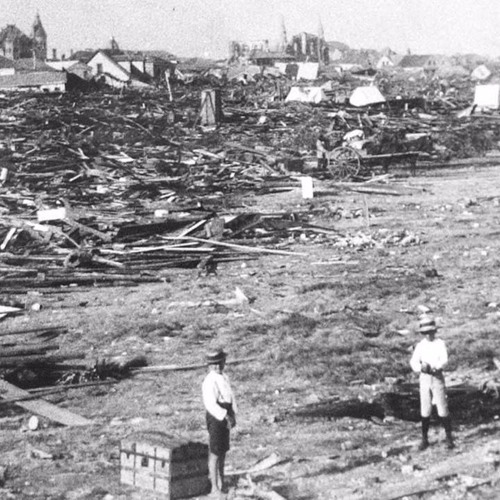


Mary’s orphanage, in a heroic attempt to save the ninety-three orphans, tied themselves to the children with clothesline to keep the little ones from being swept away as the waters overwhelmed the building. The deadliest hurricane to ever batter the United States moved onshore. Whilst the history of the track and intensity is not fully known, the weather system reached the Texan coast as a category 4 hurricane. The Great Hurricane on September 8th 1900, ripped through the Gulf Coast, killing an estimated 6,000 and leaving a further 8,000 homeless. When the hurricane came roaring ashore, the storm surge was more than fifteen feet deep on an island whose highest natural point was a little over eight feet. The best track positions for the Galveston Hurricane during the 1900 hurricane season. The end of Galveston’s reign came suddenly. Residents rummage through rubble of destroyed homes in Galveston after the hurricane In 1900, The ability to track hurricanes was possible, but rudimentary communication by telegraph from the branches of the weather service back to Headquarters. To this day, the 1900 Galveston Hurricane remains the deadliest natural disaster in United. John Blagden, a meteorologist on temporary assignment in the area, wrote in a letter the day after the hurricane that he spent all day Thursday phoning people and telling all who would listen to evacuate. With no reliable method to track hurricanes at the time. As the storm made its imminent approach, two brave men ignored the Central Bureau’s official reports and took matters into their own hands: City of Galveston Chief Meteorologist Isaac Cline chose to stay behind and rode along the Galveston beaches on horseback, warning residents to flee to higher ground.


 0 kommentar(er)
0 kommentar(er)
